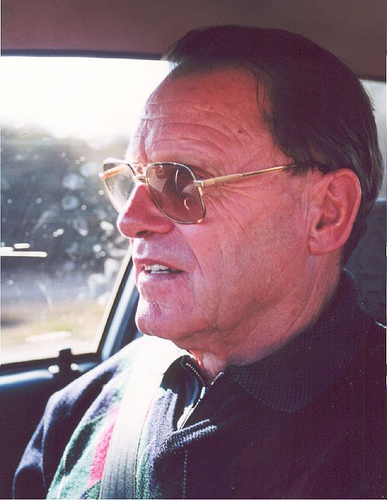Creation and Use of Counterfeit Court Documents
Creation and Use of a Counterfeit Will
The doctor Dr. med. Exxxx Hxxxx, Barbara Hirschbaeck, née Mayer-Rieckh – HUMANIC, and Brigitte Wagner consciously and intentionally collaborated to counterfeit the alleged will of Lydia Wagner dated May 21, 1991. They presented and utilized this counterfeit document in the estate proceedings.
The handwriting in the text and the signature of this alleged will of Lydia Wagner does not belong to Lydia Wagner.
Furthermore, the content of the counterfeit will is factually incorrect and precisely aligned with the corresponding forged power of attorney “Kuppelwieser-Hirschbäck” and the simultaneously presented false inventory of assets by Hxxxx in the estate proceedings.
According to this counterfeit will, Brigitte Wagner, residing in Spain, was appointed as the sole heir as an adopted daughter of the deceased. Additionally, alleged legacies were granted to a missionary Father Kuppelwieser in South Africa, as well as to the doctor Dr. med. Exxxx Hxxxx and his mother Elisabeth Hxxxx, making reference to the power of attorney “Kuppelwieser-Hirschbäck,” which had been fraudulently prepared in 1989.
Ing. Georg Wagner, the deceased’s only legitimate child and lawful sole heir, and her husband, Dr. Hanns Wagner, were referred to the statutory compulsory portion in the counterfeit will.
The included “legacies” in the counterfeit will merely served the purpose of securing a legal position for the perpetrators in the estate proceedings (see Elisabeth Hxxxx’s appeal to transfer jurisdiction from Vienna to the BG Zell am See or the LG Salzburg) and to bind each other to the joint fraudulent scheme.
The counterfeit will was published in Vienna, thus the Vienna Criminal Court initially had jurisdiction, and the first forensic handwriting analysis for authenticity verification was obtained in case 27dVr 8264/96 of the Vienna Criminal Court from the Vienna court-appointed expert, Mr. AR Friedrich Nicponsky. This initial judicial handwriting analysis determined the forgery of the will with “very high probability.”
As a witness in case 3 Cg 171/02g of the LG Salzburg, the – due to age definitely incapacitated – mother of Dr. Exxxx Hxxxx made a proven false testimony that she had personally and directly handed over this will from Lydia Wagner to her during her last admission to the hospital in Zell am See on June 10, 1993, accompanied by comments.
Since the will is not genuine and therefore not authored by Lydia Wagner, it is logically compelling that Lydia Wagner could not have passed this will “directly and personally” to third parties. The inaccuracy of this testimony by Elisabeth HÖFER is additionally proven by the report of the Zell am See Hospital, stating that Lydia Wagner was already unconscious due to brain metastases on the day of the alleged handing over of the will.
Hence, Hxxxx is clearly the originator of this counterfeit will.
In court, the incapacitated mother of Dr. Exxxx Hxxxx presented a collection of allegedly genuine handwriting samples from Lydia Wagner as a witness.
For the purpose of obstructing justice, Dr. Hxxxx and his accomplices forged these presented comparison samples in the same manner as the counterfeit will. To achieve this, they had previously gained access to the detailed findings of the incriminating handwriting analysis by Mr. SV Amtsrat Nicponsky. Consequently, the handwriting features in the forged comparison samples were precisely aligned with the incriminating findings in the court-appointed expert Nicponsky’s handwriting analysis.
The disputed “handwriting” in the will consists of numerous distinct strokes, corrections, and stopping points, which were meant to mimic the superficial visual impression of Lydia Wagner’s genuine handwriting. The authentic handwriting differs significantly. It is dynamic, swift, and connected over multiple letters in a single stroke.
When comparing the disputed will handwriting with genuine original handwriting samples, these stark deviations are clearly discernible:
The sole opposing expert who could not immediately identify the will forgery distanced himself from his opposing report in favor of the forgers after the forgery of the comparison samples he used as “genuine” reference handwriting was no longer disputed.











